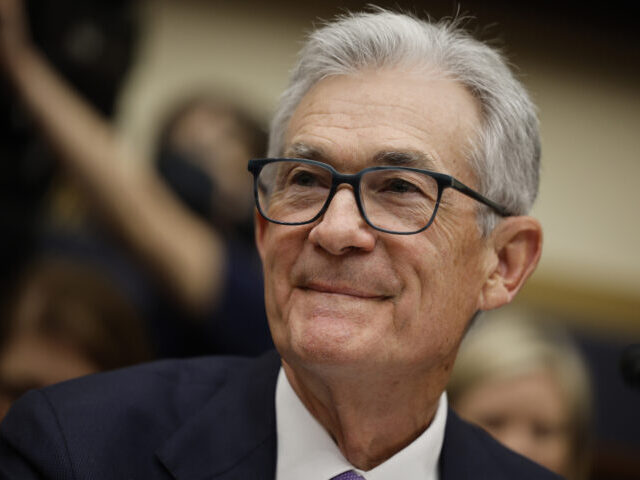Employers in the United States added 275,000 workers to their payrolls in February, the Department of Labor said Friday.
The unemployment rate increased to 3.9 percent, up from 3.7 percent in the prior month.
Economists had forecast payrolls would grow by 200,000 and the unemployment rate would be unchanged at 3.7 percent. The top of the range of expectations for 260,000 jobs and a 3.8 percent unemployment rate.
The three-month moving average of jobs is 265,000, signaling strong demand for labor. The unemployment rate has been below four percent for over two years, the longest stretch in 50 years.
Private payrolls grew by 223,000, far more than the 150,000 forecast. This is higher than the downwardly revised January estimate of 177,000 but lower than the 317,000 initially estimated for the first month of the year.
Manufacturing jobs unexpectedly contracted by 4,000, upsetting forecasts for growth of 10,000.
Last month, the government reported that the economy added 353,000 jobs in January, far more than expected. As well, the figures for December and November were revised up. This sowed doubt about the timing and extent of rate cuts by the Federal Reserve.
The January estimate was revised down by 124,00o to 229,000. The December figure was revised down by 43,000 to a still very strong 290,000. After these revisions, employment in December and January combined was 167,000 lower than previously reported.
The combination of the new estimate and the revisions indicates that hiring accelerated in February, defying expectations that the job market would soften.
Manufacturing jobs were initially reported as rising by 23,000 in January. The revisions took this down to 8,000.
Many Wall Street economists expected the January jobs numbers would be revised down. The response rate from businesses to the surveys used by the Department of Labor to compile each month’s jobs figures has fallen sharply in recent years, leading to large revisions and doubts about the quality of the data.
Changing shopping habits has led to shifts in the timing of hiring around the holidays, which may also have scrambled seasonal adjustments. In a typical January, employers shed more workers than they take on so job growth is usually an artifact of seasonal adjustments. In the Labor Department’s initial estimate, payrolls shrank by 2.6 million workers before seasonal adjustment in January. Apart from 2021 and 2023, that was the smallest decline in the unadjusted numbers since 2012.
At the start of this year, the consensus among economists and investors was that the Fed would cut rates by as many as six times beginning with the March meeting. After the Fed surprised many investors by indicating in January that it would not be ready to cut at its March meeting, many investors believed cuts would begin in at the next meeting in May.
Data suggesting that the economy has continued to grow and add jobs has now pushed off the expected date of the first cut until June and pressed down the expected number of cuts to three.
The Fed typically cuts rates when the economy appears to be weakening. Although growth was very strong last year, especially in the second half of the year, economists believed that the rate hikes of last year and the year before that would become a significant drag on growth and the labor market this year. The Fed last increased its benchmark rate in July 2023.
Some Democrat politicians, progressive economists, and Wall Street analysts have said that the Fed is risking an unnecessary recession by holding back on rate cuts. Fed officials, including Jerome Powell, have insisted that the strength of the labor market and the overall economy gives them room to be patient.
Recently, some analysts have concluded that the Fed may not cut interest rates at all this year and raised the possibility that the Fed might increase rates instead. Breitbart Business Digest, a free daily newsletter offered by Breitbart News, forecasts that the Fed will not cut rates this year.
In total, the economy added over 2.4 million jobs in 2023, the lowest since the pandemic ended and Joe Biden became president. Compared with the pre-pandemic years, however, this was a high level of job growth, much of it driven by sectors still rebuilding from mass layoffs due to lockdowns and the pandemic. The last time the economy added this many jobs in a year was 1999.
The labor force participation rate was 62.5 percent for the third consecutive month, and the employment-population ratio was little changed at 60.1 percent. These measures showed little or no change over the year, indicating that the tight labor market is not drawing in many workers from the sidelines of the economy.
Average hourly earnings for all employees on private nonfarm payrolls moved up by 5 cents to $34.57, following an increase of 18 cents in January. That’s a 0.1 percent increase, below Wall Street’s expectation for a 0.3 percent gain. Over the past year, average hourly earnings are up 4.3 percent.
Average hourly earnings of private-sector production and nonsupervisory employees edged up by 7 cents, or 0.2 percent, to $29.71.

COMMENTS
Please let us know if you're having issues with commenting.